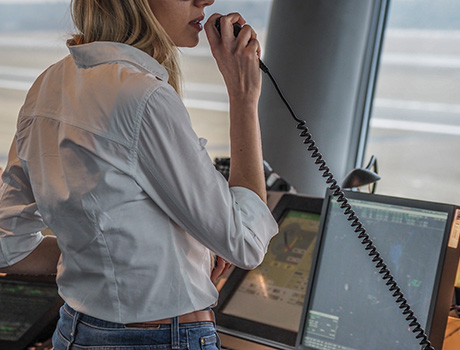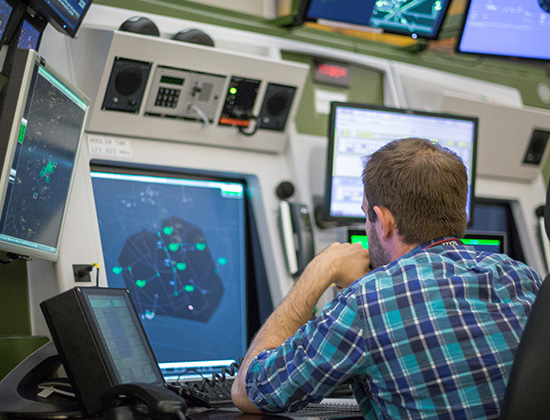About us
Every day the Polish Air Navigation Services Agency ensures safety of passengers in almost 3000 flights over Poland. We have one of the biggest airspace in Europe: over 334,000 km2. Almost one million overflights, approaches, take-offs and landings in 2019 were supervised by nearly 600 air traffic controllers employed in the Polish Air Navigation Services Agency, as well as almost 260,000 General Aviation flights under watch of the Flight Information Service (FIS).
Only in 2019 air traffic growth in Poland amounted to 5%, while in the whole European network to 1%.
Our air traffic controllers are supported by advanced technology. Over 200 devices located throughout Poland guaranteeing safety of air traffic within the Polish airspace: airground communication systems, RNAV systems, ILS – DME systems supporting smooth and precise landing in low visibility, radars. We are responsible for advanced aviation infrastructure we build and develop it.
Together with ORO NAVIGACIJA, PANSA joined the Functional Airspace Block – Baltic FAB.
In alliance with most experienced ANSPs we invest in air traffic management technology. Baltic FAB together with NATS, DFS and other European leading ANSPs, migrates the air traf-fic management system into iTEC.
PANSA also builds and develops tools for efficient management and planning of airspace:
CAT (Common Airspace Tool) – that ensures accurate and efficient management of the airspace,
PANDORA – that supports controllers and other operations personnel with the wide spectrum of a real time aviation data, raising their situational awareness,
PANSA UTM – system for UAV flight coordination,
TRAFFIC – Track Advisor for Flight Information Concerns, which provides the ATM system information from flight plans, as amended and complementary messages.
The interoperability between systems from planning phase to real-time coordination allows PANSA to provide Intelligent Trajectory Management System.
The Polish Air Navigation Services Agency is also the only institution in Poland training and employing civil air traffic controllers. We also provide Flight Inspection Services for monitoring the proper operation of groundbased navigation aids from the air. We offer validation of conventional and satellite based flight procedures. Every day there are almost half a million passengers on board of all planes flying over Poland. In the Air Traffic Management Centre of the Polish Air Navigation Services Agency, as well as in 15 airports throughout Poland the air traffic controllers take care of their safe journey. We are a part of aviation world which grows dynamically, and we grow together with it. Due to specific geographical location of Poland, PAN-SA in cooperation with domestic and European institutions will become a bridge between Europe and the East in the services provision.
We are a gateway to Europe and a gateway to the East.

